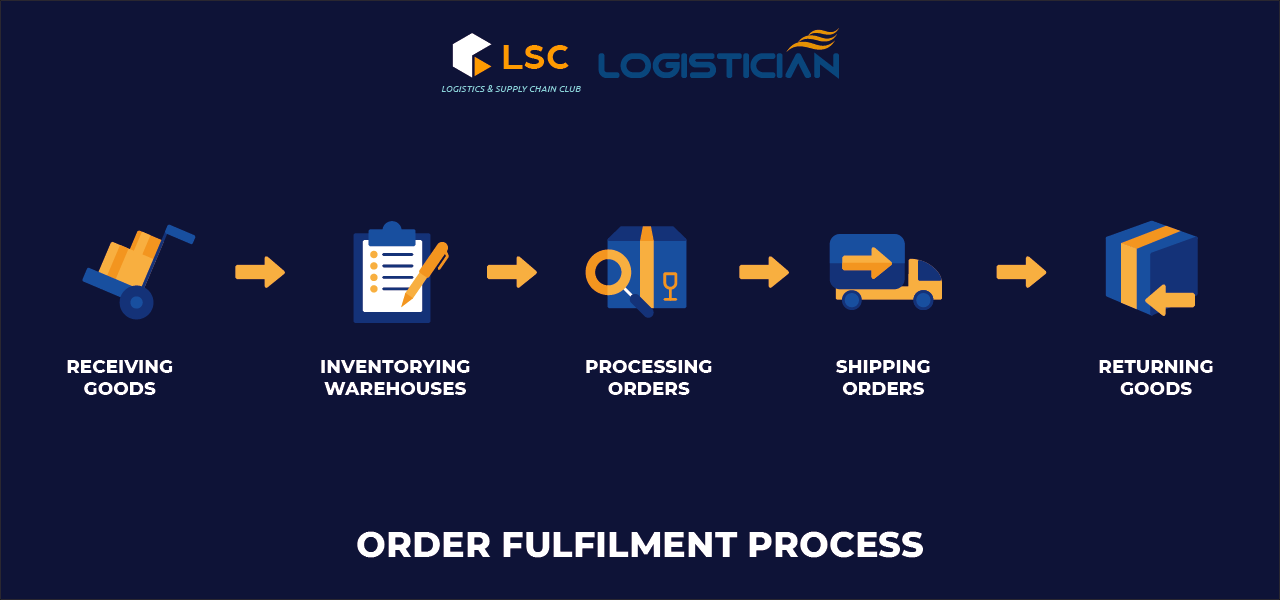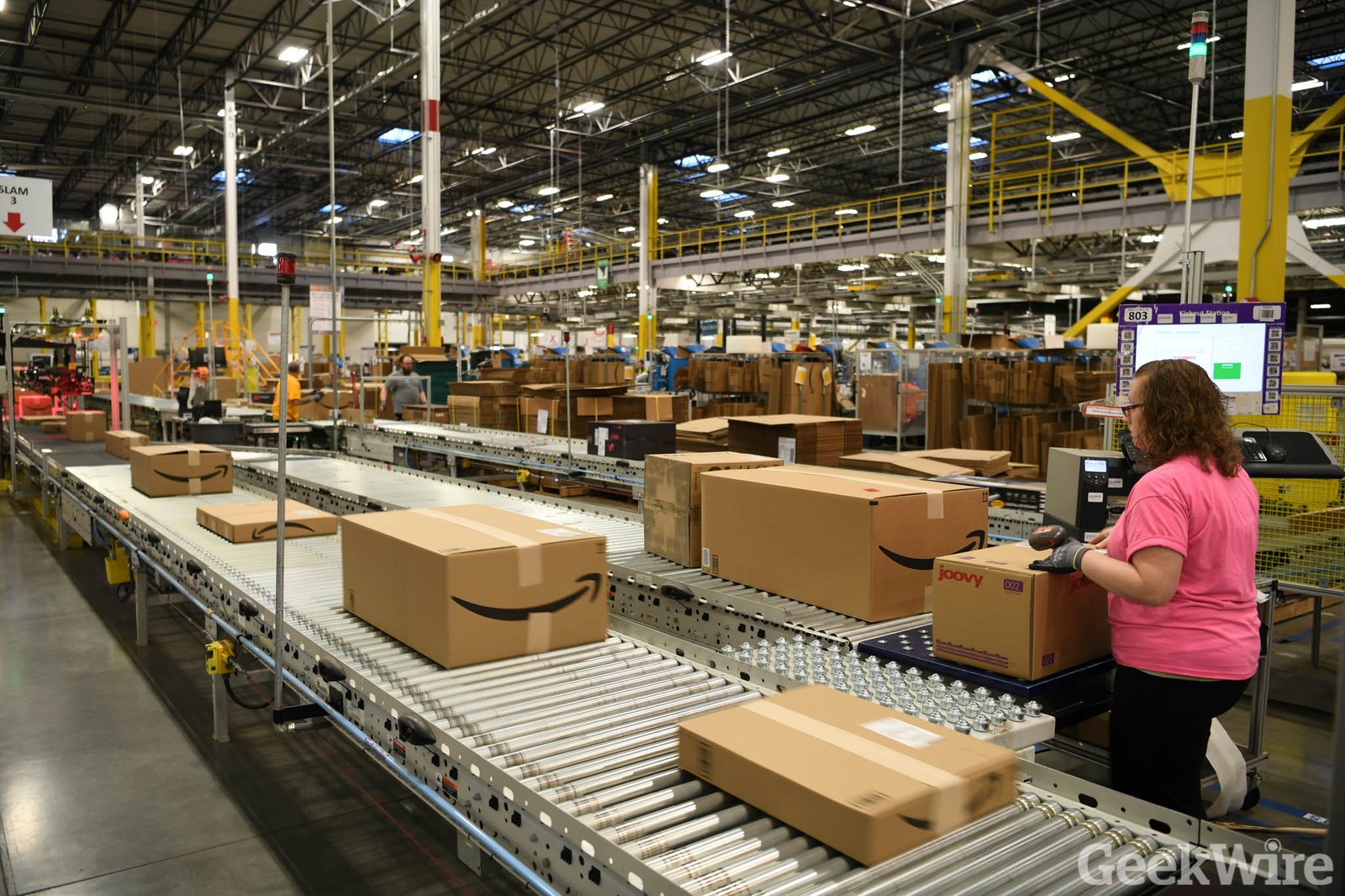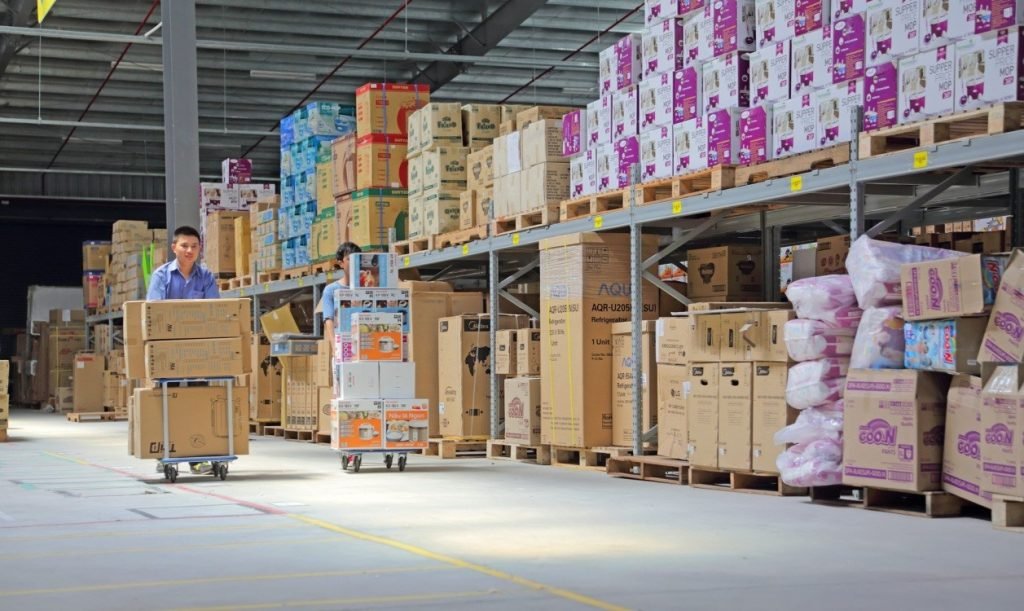HIGHLIGHTS
- Order fulfilment is defined to include the steps involved in receiving, processing, and shipping the order to the final customer.
- Order fulfilment is a part of the supply chain process. There are 4 main forms of Order fulfilment: in-house, outsourced, dropshipping and hybrid.
- The Order fulfilment model is applied by many giants in the e-commerce industry such as Amazon, Alibaba, and Tiki, which is an indispensable name in Vietnam.
FULL ARTICLE
What is order fulfilment?
Order fulfilment is defined to include the steps involved in receiving, processing, and shipping the order to the final customer.
Order fulfilment can be applied to many types of orders in many forms from business to business (B2B) or from business to customer (B2C).
What are the types of order fulfilment?
Order fulfilment is a part of the supply chain process. There are 4 main forms of Order fulfilment: in-house, outsourced, dropshipping and hybrid.
In-house Order fulfilment
In the In-house Order fulfilment model, the sales staff will handle the fulfilment processes themselves, including storing and shipping products to the buyer’s place. This form is suitable for 2 types of businesses:
- Large companies are willing to spend a large budget to own their warehouse, hire many employees to manage the warehouse, and complete the order fulfilment process. Thus, to use In-house Order fulfilment, enterprises must ensure that a complete and standardized fulfilment operation process is built to avoid disordered goods, and order jams leading to the dissatisfaction of customers.
- The company just started a business (start-up) that has not had many customers and orders, so warehouse management, order processing, and delivery can all be done by themselves. However, when this company operates for a long time and has more orders, the self-fulfilment form is no longer suitable.
Outsourced order fulfilment
Sellers will outsource services from companies providing order fulfilment services instead of doing by their own. These companies will perform all goods-related activities including picking, warehousing, order processing, delivery, and collection on behalf of the seller.
Thus, the sales enterprise will save a lot of money such as warehousing costs, employee wages, and less effort in the activities that occur before and after the order. This is considered as the optimal solution for small and medium-sized companies, saving warehousing and transportation costs, allowing maximum time to focus on sales and marketing in the market.
Dropshipping
In this case, the seller does not own the goods. Instead, the seller contacts the supplier to ship the goods directly to the buyer using the seller’s information.
Dropshipping is very suitable for those who like to sell a variety of items and just want to invest in marketing activities to increase brand reputation instead of spending money on warehousing and activities related to handling goods.
However, it can be seen that the risk comes from the seller’s failure to control the quality of the goods before being released from the supplier’s warehouse to be shipped to the customer. If you are not careful in choosing a reputable supplier, you may lose customers and affect your reputation.
Hybrid Fulfilment
Hybrid Fulfilment is a form when a business uses a combination of 2 or 3 of the above models in order fulfilment. For example, the company will use in-house order fulfilment with some items when those items need to be reworked or assembled before being shipped. In addition, the company will use dropshipping services for other items that they don’t buy often or that they don’t want to keep in stock, such as items that take up a lot of space or are expensive.
Why is order fulfilment important?
Consumers today are used to delivering orders within a few days (or even the same day). Customers always want to have the delivery options that best suit their needs. In particular, the delivery service must be both fast and suitable for the customer’s budget. If not meeting those requirements, companies that perform order fulfilment will lose potential partners and customers.
Besides, when optimizing the order fulfilment process, businesses will reduce shipping costs, operating costs, and at the same time focus resources on attracting customers to buy products and improve customer services.
Order fulfilment process
The Order fulfilment process will be conducted at one or more distribution centers, including activities: inventory management, supply chain management, order processing, quality control, and customer support. If the customer has questions about the product, then making an exchange or returning the product is necessary.
Accordingly, the process of performing Order fulfilment can be divided into 5 basic stages, including: Receiving goods, inventorying warehouses, processing orders, shipping, and returning goods.

Receiving goods
After importing goods from the manufacturer/supplier to the warehouse, the party providing the Order fulfilment service needs to do the following:
- Check the goods to make sure that the quantity of incoming products matches the quantity ordered from the supplier, and also check the quality to make sure none of the products are damaged.
- Add storage units (SKUs) to the warehouse management software to track the location, the quantity entered and sold of each product.
- Attach SKU storage units or barcode labels to products that do not have SKUs or barcode labels.
Inventorying warehouses
After being entered into the warehouse and updated to the warehouse management software, the goods will be arranged on the shelves. To optimize the speed and accuracy of order fulfilment operations, operators need to properly store inventory.
Each SKU storage unit is typically assigned a separate storage bin to enable faster and more efficient order processing. Usually, only a portion of the stock is placed in the crates, the rest will be in a separate area of the warehouse.
With SKUs being sold out frequently, placement will be arranged closer to the packing stations. This arrangement will probably be supported by the software.
Processing orders
The order processing system will perform two main activities: picking and packing products based on customer orders. Usually, the order management software will be integrated with the shopping cart on the e-commerce website so that the order processing will start automatically.

Picking order
Automated workers or robots will select items from the warehouse according to the instructions of the packing slip. The packing slip will contain specific information such as a list of SKUs, product color, size, number of units, and its location in the warehouse/distribution center.
Packing orders
Packaging materials will be selected by the packing team or automated robots so that the actual weight or size is the lowest, calculated by multiplying the length, width, and height of the package. Since space on delivery trucks is limited, it is important to optimize weight, dimensions (or DIM weights), which will increase shipping speeds and possibly reduce shipping costs.
Moreover, on each package, there will be information related to the shipment so that it can be returned easily in case the customer wants to exchange or return the item for a refund later.
Shipping orders
After the order has been picked and packed, it is sent to the shipping area to be prepared for delivery to the final customer.
Here, many shipping methods will be determined to deliver the order to the customer at the right time with the most optimal cost. Shipping methods are selected based on consideration of order size and volume, destination, special requirements for handling, storage, and speed of transportation.
However, shipping can become complicated to control because some sellers require direct delivery from a particular carrier. In addition, there are also many sellers with orders that are diverse in types and sizes with different specific requirements sent to domestic and international customers.
Besides shipping, the shipper is also responsible for updating the status of an order with both the seller and the buyer so that they can easily track the status of the order.
Returning goods
The ability to return products is one of the most important factors in making a purchase decision, especially for online shoppers. Accordingly, the efficiency of handling customer return requests is very important, because this will create customer trust and satisfaction for the business.
Online sellers should establish both internal and external return policies. The external policy should be listed on the seller’s website showing how customers ship and return it. Meanwhile, the internal policy should clarify for the employee or the order fulfilment service provider the standard process of returning goods.
Tiki’s Order fulfilment activity
The Order fulfilment model is applied by many giants in the e-commerce industry such as Amazon, Alibaba, and Tiki, which is an indispensable name in Vietnam.
How does Tiki’s order fulfilment work?
With the Order fulfilment model, e-commerce retailers like Tiki will act as intermediaries between sellers and buyers.
The way this model works is as follows:
- First, Tiki will receive orders from consumers through its e-commerce website.
- The requested order will be directly picked up by Tiki at the seller’s warehouse or the seller will deliver the goods via Tiki’s warehouse.
- After the goods are delivered to the warehouse, Tiki will pack and deliver the goods to the end-customer.
- Customers make payments to Tiki in the form of cod (cash on delivery) after receiving goods or paying online.
- At the end of the period, Tiki will make the payment of the order value to the seller.
Exchanges and returns will be done in the opposite direction.
Details of Tiki’s order confirmation process
- After receiving the order request from the customer, the seller needs to confirm the delivery or refuse to deliver within 4 hours.
- If delivery is confirmed, the seller needs to prepare the goods, print the consignment note, and hand over the goods to Tiki. The seller will also be provided with an account by Tiki at “sellercenter.tiki.vn” to be able to confirm the order.
- In case the order is canceled, if the customer cancels before Tiki comes to pick up the goods, the system will automatically cancel the consignment note. In case Tiki has already picked up the goods, the system will automatically generate the corresponding purchase order return (por) and return the goods to the seller.
Optimization of Tiki’s logistics (warehouse – logistics)
Tiki’s success is in no small part thanks to the optimization of warehouse operations. Tiki’s 5000 square warehouse in Tan Binh district is the company’s most optimal warehouse so far with a 90% occupancy rate.

Refrigeration and electronic goods are placed near the door and separate from other items. Along the length of the warehouse, there are at least 80 shelves of goods and over 2 meters high arranged parallel to each other, the distance between the two shelves is just enough for 2 people to go together. At the end of each shelf, there are different colors at the bottom to distinguish the sizes of the goods being arranged.
Applying from the operation of the ‘retail tycoon’ Amazon, Tiki also built an in-store management system with the uninterrupted routing of goods, extending to the end of the shelf. Although Tiki’s warehouse staff can organize goods in a messy way, while one tray can hold books, picnic items, swimming goggles, etc, the software system will rearrange and create a picking path most optimal. Thanks to that, during peak times, Tiki’s staff can pick up more than 5 items within a minute.
Phan Quyen













